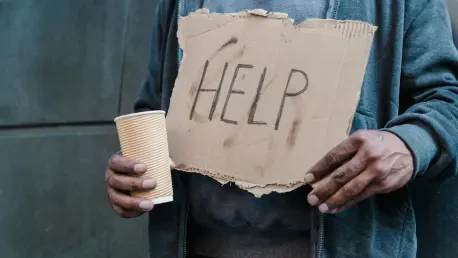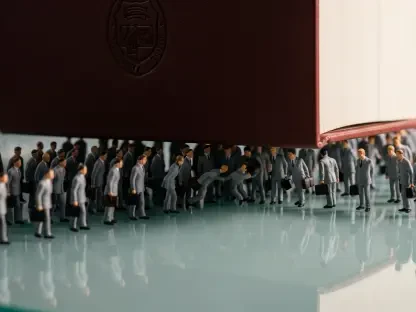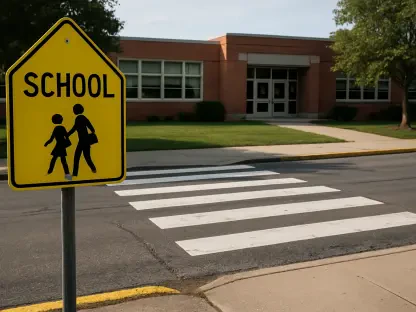What happens when the path to a better life becomes a road to nowhere for those who need it most? Picture a young, determined student from a struggling neighborhood, the first in their family to attend college, pinning all hopes on a degree to break the cycle of poverty. Yet, in 2025, data reveals a sobering truth: for low-income students across the United States, the economic payoff of higher education is shrinking at an alarming rate. This isn’t just a personal setback; it’s a systemic failure that challenges the long-held belief in college as a great equalizer.
The significance of this issue cannot be overstated. Higher education has historically been touted as the key to upward mobility, a way to level the playing field across socioeconomic divides. But recent research paints a starkly different picture, showing that the wage premium—the extra earnings a degree should provide—has halved for low-income students over recent decades. This growing disparity not only impacts individual lives but also threatens the broader fabric of economic equity, raising urgent questions about the role of college in today’s society.
A Broken Promise: College No Longer Levels the Field
For generations, a college degree was seen as a guaranteed ticket to a better future, no matter one’s starting point. That narrative, however, is crumbling for low-income students who find themselves grappling with diminishing returns on their investment. The gap between the economic outcomes of college graduates from different income brackets has widened, leaving many to question whether pursuing higher education still makes sense for those with limited means.
This shift represents more than just numbers on a spreadsheet; it reflects a profound change in opportunity. Where once a diploma could transform lives across all backgrounds, today it often reinforces existing inequalities. Low-income students, despite their grit and determination, are increasingly finding that the system is stacked against them, pushing them toward paths with lower economic value.
Economic Shifts: How the Landscape Betrays the Disadvantaged
The transformation of the labor market over past decades has played a pivotal role in altering the value of a college degree. As industries demand more specialized skills and prestigious credentials, the benefits of higher education have become unevenly distributed. Low-income students often end up in educational tracks that offer little in terms of financial security, a trend that starkly contrasts with the advantages secured by their wealthier peers.
Systemic barriers compound this issue, funneling disadvantaged students into institutions and programs with declining economic worth. The result is a reinforcing cycle of disparity, where the very tool meant to lift people out of poverty instead entrenches them further. This dynamic affects millions of families who view college as their primary hope for a brighter future, only to face a reality of limited gains.
The Hard Numbers: Why the Wage Premium Is Fading
Digging into the data, three critical factors emerge as drivers behind the shrinking wage premium for low-income students. First, institutional choice creates a significant divide—many from lower-income backgrounds attend community colleges or for-profit schools, which have seen sharp drops in funding and graduation rates over time, unlike the research universities frequented by wealthier students. Statistics show that institutional choice now accounts for over 5 percentage points of the income gap among graduates, a dramatic increase from less than 2 points in earlier eras.
Second, the choice of major further widens the chasm. Higher-income students often pursue high-earning fields like computer science, while their low-income counterparts are more likely to study humanities, disciplines with declining market value. Finally, the historical economic strength of colleges typically accessed by disadvantaged students has eroded, contributing to over 80% of the wage premium decline. These factors paint a clear picture of a system where outcomes are increasingly tied to socioeconomic status.
A striking example comes from comparing two hypothetical graduates: one from a low-income background with a degree from a struggling local college, and another from a well-funded university with a tech-focused major. The latter often secures a high-paying role immediately, while the former struggles to find work that justifies the cost and effort of their education, illustrating the harsh disparities at play.
Real Stories, Real Struggles: Voices from the Divide
Research from esteemed economics professors at top universities, drawing on data spanning over a century, underscores the depth of this inequality. Their findings reveal that the earnings boost for low-income students has dropped by half in recent decades, a trend not mirrored among higher-income groups. One researcher poignantly stated, “Higher education is no longer a universal engine of mobility; outcomes hinge on where and what you study.”
Beyond the statistics, personal accounts bring this crisis to life. Consider a first-generation student who, after years of sacrifice, graduates from a community college with a degree in a field with little demand, only to face a job market that offers meager returns. In contrast, a peer from a more affluent background, armed with a degree from a top-tier institution, steps into a lucrative career almost effortlessly. Such stories highlight the human cost of a system that increasingly favors the privileged.
The data and narratives together reveal a troubling reality: the promise of college as a pathway to success is not equally fulfilled. For every success story, countless others are left with debt and disillusionment, their dreams of economic stability undermined by structural inequities that show no signs of abating without intervention.
Bridging the Gap: Strategies for Students and Policymakers
Despite these challenges, there are practical steps low-income students can take to navigate this uneven terrain. Researching institutions with strong graduation rates and support programs, such as certain public universities, can make a significant difference compared to for-profit schools with poor outcomes. Additionally, exploring high-demand fields like healthcare or technology, even through initial community college programs with transfer options, can open doors to better-paying careers.
Accessing scholarships, mentorships, and career counseling also helps close gaps in resources and information. These tools empower students to make informed decisions about their education and future. Real-world programs that connect disadvantaged students with industry professionals have shown promising results, offering guidance that can steer them toward more rewarding paths.
For policymakers and educators, the data calls for urgent action. Increasing funding for community colleges and creating clear pathways to economically viable majors are essential steps to restore equity in higher education. By addressing these systemic issues, there is a chance to realign college with its original mission of providing opportunity for all, rather than perpetuating divides based on income.
Reflecting on a Changed Reality
Looking back, the journey through decades of data and personal struggles reveals a profound shift in the role of higher education. What once stood as a beacon of hope for low-income students has transformed into a complex maze of unequal outcomes. The halved wage premium and stark disparities in institutional and major choices paint a picture of a system that often fails those it was meant to uplift.
Yet, amidst this sobering reflection, actionable steps emerge as vital considerations for the road ahead. Empowering students with better information and access to high-value programs, alongside policy reforms to bolster underfunded institutions, offers a glimmer of hope. These strategies, if pursued with commitment, hold the potential to reshape the landscape, ensuring that the pursuit of a college degree regains its promise as a true equalizer for future generations.









